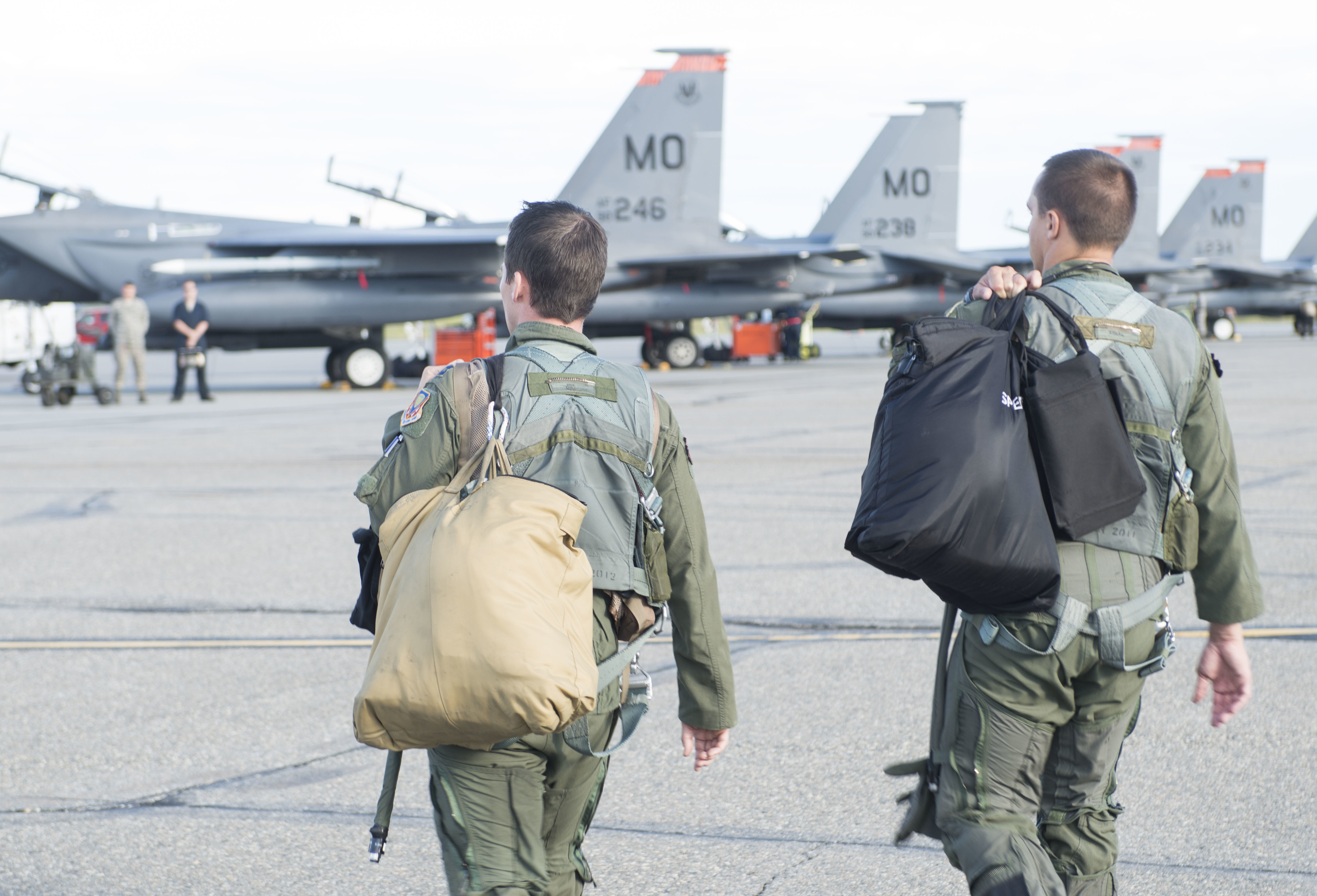
Members of the 391st Fighter Squadron prepare for a mission Aug. 8, 2017, at Eielson AFB, Alaska. Initiatives like the career intermission program aim to keep pilots in the Air Force by incentivizing them with sabbaticals and opportunities to develop professionally. Air Force photo by SrA. Malissa Armstrong.
Airmen will now have three opportunities every year to apply for a break from Active Duty status, the Air Force announced Friday.
In what used to be a once yearly application window, airmen requesting to enter the career intermission program (CIP) now have expanded opportunities to ask to separate from Active Duty for a sabbatical no longer than three years and no shorter than one.
The three annual application windows are:
- April 1 to May 13
- Aug. 1 to Sept. 12 (However, this year, the second cycle started on Sept. 22, the day USAF announced the measure, and ends Oct. 31.)
- Dec. 1 to Jan. 12
The program, which has been used by 108 airmen since it started in 2014, is one way the service is aiming to respond to a critical pilot shortage.
On top of allowing airmen more definitive chances to apply for CIP, the Air Force Personnel Center will also allow some airmen to apply outside the three timeframes. For one, airmen with “humanitarian circumstances” can now apply for CIP whenever, as can airmen whose military spouses are assigned to a location they cannot immediately get assigned.
CIP allows airmen the ability to drop out of the Active Duty component for a bit when their personal lives offer opportunities, or tragedies, they need to attend. For example, an airman may fly an airliner for a spell before sliding back into service in what, according to the release, should be a “seamless return.”
Qualified airmen are those in the Active Duty Air Force, as well as the Active Guard and Reserve. The program, which can only be utilized once, places airmen in the Individual Ready Reserve, which means they’re recallable to work if the need arises.
While AFPC determines whether to allow CIP entrance to airmen—a decision based on their “potential to serve the Air Force in the future, including leadership, duty performance, professional development, depth and breadth of experience, and achievements”—it advises airmen not to count on it, according to the announcement.
“We tell all airmen applying for CIP that they shouldn’t begin outside employment or relocate their families based on an assumption their application will be approved,” Adriana Bazan, a military personnel specialist at AFPC, said in the release.
Another recently announced effort to recruit and retain more pilots is headed by Air Mobility Command, which is considering creating a “fly-only track,” AMC Commander Gen. Carlton Everhart announced during last week’s Air, Space, & Cyber Conference, calling the pilot shortage a “national crisis.” On the enlisted end, CMSAF Kaleth Wright is endeavoring a similar effort, who’s working to reduce the bureacracy of reviews and awards requirements, specifically trying to “remove [enlisted performance reviews] as a requirement just for A1Cs.”
For an in-depth look at what USAF is doing to respond to the pilot shortage, from throwing money at the problem to making it less administratively cumbersome to be a pilot, read “Rebuilding the Ranks” from Air Force Magazine’s July issue.